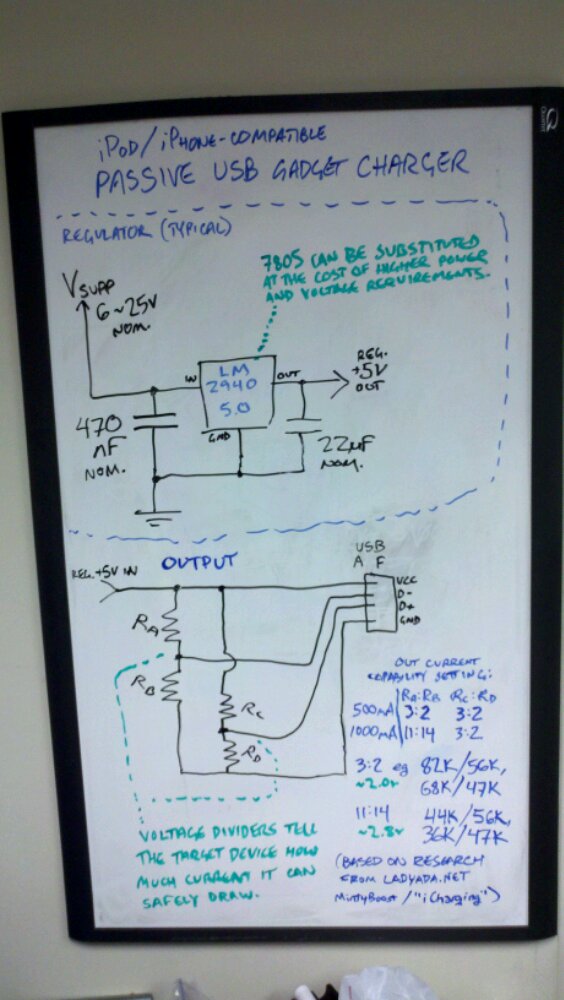Whiteboard: Passive USB Gadget Charger

For reasons explained elsewhere in detail[1], iPods (and iPhones, etc.) newer than the oldest generations refuse to charge if all you give them is a USB port with the power lines connected and the data lines disconnected. Presumably, it has partly to do with the fact that some of the newer devices can negotiate for more than the 500mA upper limit of USB proper, and possibly that the additional requirements hinder the proliferation of unlicensed peripherals, if only temporarily, so that Apple has an easier time pushing their own.
Fortunately, there’s no actual (digital) data transfer going on. To make the charger visible to the device, a bit of static information is provided on the data lines. Each data line can be held to a voltage as low as 0V (ground) or as high as about 3.3V (USB nominal logic high). Simply setting the lines to some combination of these high and low values[1] reports to the device that it can provide 100mA or 250mA for charging. Newer devices look for cues between high and low; the device reports that it can supply 500mA by holding both data lines at around 2.0V, or 1000mA (1A) by holding D+ to 2.0V and D- to 2.8V. The latter two configurations are what the schematic describes.
This charger should also generally be okay for other USB-charging devices; nothing going on with the data lines is in principle electrically unsafe for a USB device.